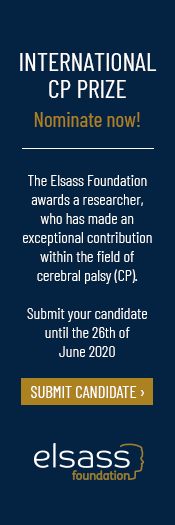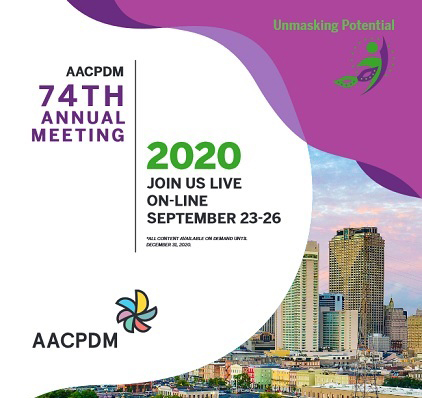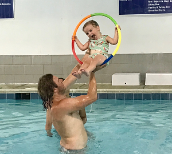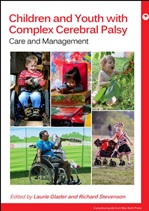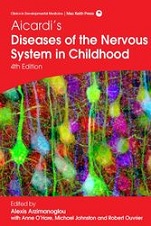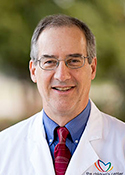
|
President's Message
While the pandemic has reminded us of our fragility, it has also demonstrated how everything, and everyone is interconnected in this world of ours. Eradicating the virus in one community cannot be achieved unless it is done in all communities. Our Academy’s commitment to equal access to knowledge is manifested by our continuous efforts to reach out to professionals around the world through our partnership with the IAACD. We were very glad to welcome the Indian Academy of Cerebral Palsy to the IAACD last Fall. My most sincere appreciation and admiration goes to the 2020 Scientific Program Committee, who facing unprecedented uncertainty has turned adversity into opportunity. The theme for the meeting is "Unmasking Potential" and it has really done that. The virtual format of the meeting will provide you with the opportunity to obtain more CME credits than ever before, allowing you to do it at your own pace and at an incredibly affordable price. I hope you all participate in this especial event and help us promote it with your professional contacts around the world. I cannot finish this message without saying that I have always loved our Academy for its multidisciplinary nature and its continuous effort to live our core values of inclusion and non-discrimination. Our Academy not only believes in this statement, but strives to live these principles every day in everything we do based on a fundamental respect of human life. Stay safe and keep going,Mauricio R. Delgado, MD President, AACPDM AACPDM is Committed to Equity, Inclusivity, and Respect for Human DignityAt the AACPDM we oppose disparities in medical care and systemic racism against Black people and other people of color. We will use our platform to elevate and amplify all voices around health disparities, including the voices of our individual members. We will be staunch allies with children and adults of color against systemic racism. We will do this not only because it is the right thing to do, but because medical research shows that it directly affects the health and wellness of people of color in our society, including those with and at risk for cerebral palsy and other childhood onset disabilities. We are committed to taking an active and conscious role in this process. We will use these principles to continue to fulfill our mission to promote excellence in research and services for the benefit of people with and at risk for cerebral palsy and other childhood onset disabilities.74th ANNUAL MEETING – Breaking News!
In 1948, the AACPDM held the first annual meeting in Baltimore bringing together a small group of professionals devoted to the inter-disciplinary education of clinicians interested in improving care for children with Cerebral Palsy (CP). Over the years, the annual meeting has grown into an important annual event that provides professionals the opportunity to hear about the most up to date research, learn from experts at breakfasts and instructional courses and connect with colleagues old and new. The connections created at the annual meeting have blossomed into research collaborations and long-standing friendships. While the program committee and the AACPDM board have been closely monitoring the situation associated with the current pandemic and considered all the options related to holding our traditional in-person meeting; the AACPDM Leadership has made the difficult decision to cancel our in-person meeting, and opt for the first ever virtual meeting. We believe this is the best decision to protect the health and safety of our members and attendees. Although we are unable to come together for an in-person meeting, the program committee is thrilled to announce that we will offer a virtual program in a similar format to our traditional meeting. As all of our keynote speakers, and the vast majority of speakers for pre-courses, scientific presentations, breakfasts, and instructional courses have agreed to participate in our virtual meeting, our program will offer a similar educational experience through both live and pre-recorded options. Attendees will be able to meet with our vendors and ask questions following live presentations. Should you be unable to attend the meeting during the live session, you will still have the opportunity to ask questions of the presenters and engage with our vendors and other attendees at the meeting. In keeping with this years’ theme of the meeting, "Unmasking Potential", we are creating fresh, new opportunities for networking and collaboration with other professionals passionate about enhancing the health and well-being of individuals with childhood-onset disabilities around the globe. By registering for the AACPDM Annual Meeting, you will have the ability to earn over 89 educational credits at your convenience by giving you virtual access to all Annual Meeting sessions until December 31, 2020! This is more than double the usual annual meeting CME/CEU value! Please check the AACPDM website regularly to receive program updates. The AACPDM Leadership would like to thank each of you for your support in this decision. Save the dates of September 24-26 so that you can attend the AACPDM live virtually! Susan Sienko, PhD AACPDM SIGsAs part of the AACPDM Strategic Plan process, Special Interest Groups (SIGs) were identified as an important mechanism to promote engagement with the Academy and to facilitate professional development within the broad strategic plan pillar of Learning Innovation. Due to the high level of interest in SIGs, the AACPDM Board of Directors authorized and supported some initial activities. In 2018, the Board developed a provisional SIG description or guidelines for development and solicited applications for pilot SIGs. By spring of 2019, two groups were approved to explore models of SIGs within the Academy. These groups arose from within the Lifespan and Complex Care committees and have been called the Adults & Aging SIG and the Complex Care SIG. As these pilot SIGs were formed, our goals were to:
The pilot effort with the Lifespan and Complex Care SIGs began in earnest by our 2019 Annual meeting in Anaheim. Each group was provided with support starting in mid-2019 so that they could communicate with potential members and to inform the Academy membership about their formation. The SIGs had their first in person meetings in Anaheim with 2 hour sessions that were open to all interested parties, Academy members and non-members. The SIGs were instructed to pursue whatever activities they found meaningful within some broad mandates (develop a leadership mechanism, focus on education and collaboration, and create an agenda for the meeting). The Board asked that they provide regular updates on their activities and seek to respond to some key questions including: Following the Anaheim meeting, the SIGs reported on their success. Adults & Aging had 45 attendees, about a third of whom were not Academy members. The Complex Care SIG had 64 attendees and 50% were not Academy members. Both groups reported a vibrant multi-disciplinary makeup, robust discussion, and significant ongoing interest from the attendees. Although both had identified a chairperson, specific leadership models were not yet solidified. Opportunities for more support and resources were identified including things like online platforms, funding for awards, and organizational help for meetings during the Annual meeting and virtually in between. Committee leadership also offered useful feedback identifying that the SIGs seemed to fulfill a separate need from the Committees because Committees advance the AACPDM organization tasks and the SIGs were providing discussion and ongoing support for a range of members and non-members. The value of the SIG as an interest group with no term limits or restriction in number of members was acknowledged. At this time, the Board is delighted with the progress of the first two trial SIGs. The need remains to better define our SIGs and their role within the Academy. Moreover, as our Academy wrestles with limited resources and unpredictable finances in the climate of COVID19, we must be prudent. Thus, for the rest of 2020 and into 2021, the Academy will not expand our SIGs. We will use the time to learn more about how the SIGs might develop and monitor the costs of supporting them. The Board is interested in learning more about how the membership would like to see the SIGs develop, especially in terms of how SIGs interact with Committees. Questions about this will be incorporated in an upcoming member survey. The AACPDM has crossed into new territory with our foray with SIGs. Stay tuned for further developments! Updates from AACPDM Committees
Complex Care Committee:
International Affairs Committee:
Care Pathways:
The Committee wishes to thank all members who took the recent survey seeking to evaluate use of the Care Pathways. The aim was to determine the extent of usage of the pathways in clinical practice and potential barriers and strategies to increase implementation. To aid in future prioritization of pathway development, the Committee also asked for your feedback on possible future topics. We look forward to sharing the results with the membership in the coming months. View the newest pathway on Early Detection of Cerebral Palsy on the AACPDM website. Four pathways remain in development: preparing for surgery, respiratory health in cerebral palsy, promoting physical activity for individuals with cerebral palsy, and osteoporosis in transitional care and adulthood. Book ReviewsMost of the chapters offer the latest information with excellent references and will improve care in many settings. The chapters are organized by topic and written by leading experts in a language that all professionals can understand. Both experienced teams and novice providers will find new information to help them deliver state-of-the-art coordinated care. The highlights of this book are the helpful forms and care charts. The dedication and two chapters offer important voices of parents, siblings and people with CP about how they would like to be approached and included. The first chapter is an overview in which the important point is made that all children with lifelong sensory and motor impairments, that are not degenerative, can be considered CP if they meet the criteria. There are many families whose children have anatomical, genetic, metabolic or trauma causes of CP, who have not understood they could be included under the CP umbrella. These families are often not aware of assessments and interventions that could be helpful because they do not know to seek out information on CP. Key Features:
Organized into 32 chapters in 12 parts, it retains the emphasis on clinical orientation of previous editions with new sections and organization without increasing the size, now 1475 pages but includes extensive references to give direction for further investigations and learning. "Our aim was not to provide an exhaustive review for each disorder; . . . We . . . favoured a comprehensive description of clinical findings to permit diagnostic orientation, prognosis and management." (p.XXV). This textbook continues the objective of previous editions to cover all significant neurologic-based disorders of children from the common to the rare with current understanding of etiology, genetics, outcomes, and treatments succinctly presented. This should be a valuable tool for providers to understand unfamiliar neurologic features in children as well as guidance for in depth exploration of familiar disorders. Letter From the Editor:
|
